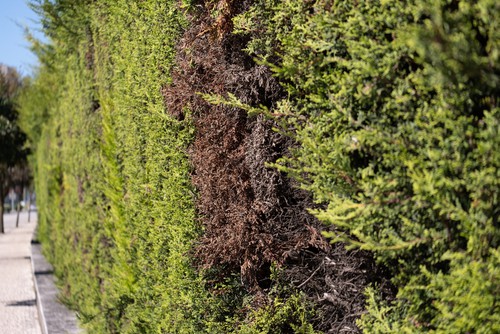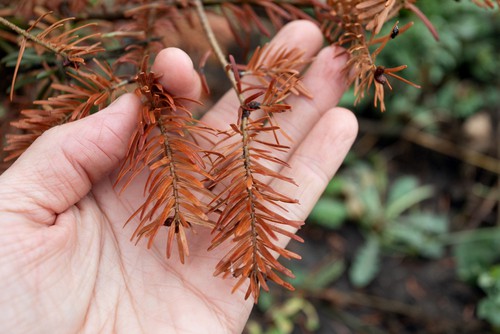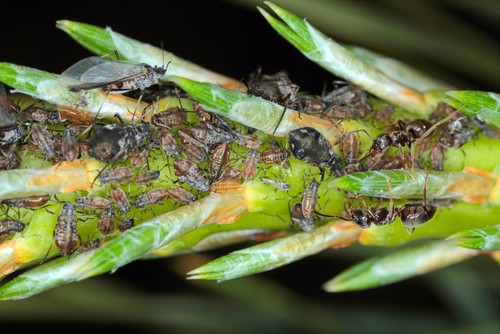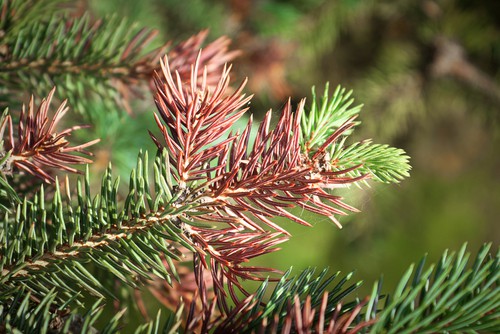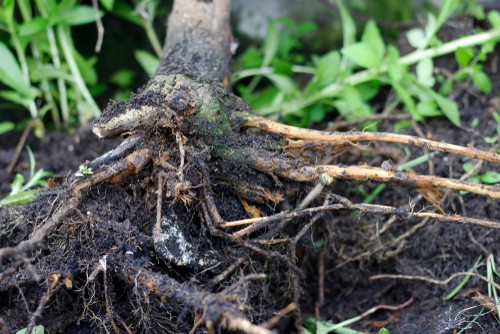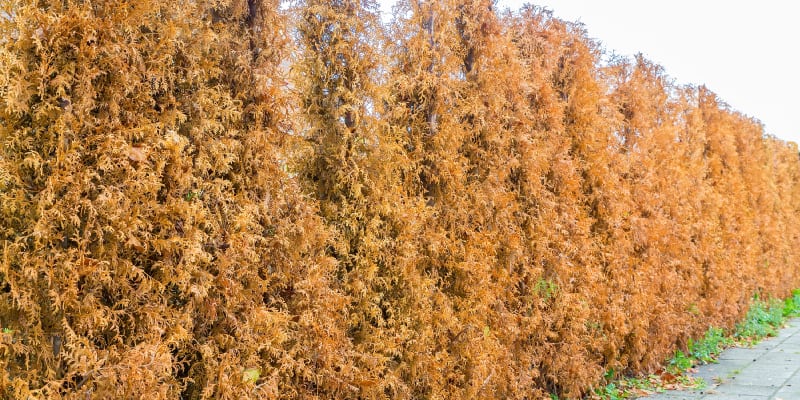
How to revive and bring conifers back to life?
Our site is reader supported, this means we may earn a small commission from Amazon and other affiliates when you buy through links on our site.
Some common problems with conifers require you to revive and bring them back to life but remember, they are not actually dead, there are just not in good health. If you peel the bark back and you see green under the bark, then the conifers are likely still alive and can be revived.
In this guide, I identify the most usual issues that harm conifers and give ways to refresh and revive your conifer. But be warned that it’s not always possible.
Pruning at the wrong time of year
Most conifers can handle some careful pruning. Indeed, leylandii (Leyland cypress) can grow up to 90cm a year, so pruning is almost essential.
Make sure you prune conifers sometime between April and August, in two or three sessions. Don’t prune too much at once as the tree may experience shock and respond negatively.
You can learn more about when and how you should prune conifers in my guide here
Revival of conifers
Ensure that you prune every year and at the right time. You don’t want to leave it for several years and then have to cut away a significant portion of the tree. After lightly pruning, use an organic mulch around the conifers to provide them with their required nutrients. If your conifer is in its first year of growth, you can use a slow release fertiliser as well.
Pruning back into brown old wood
Most conifers grow only from new green wood. If you cut them back beyond the new green buds to the old wood, they just won’t grow from there anymore. The new buds are essential for new foliage development. If you trim in this way, you’re left with patches of bare branches in your trees that will always remain dead. This also happens when you trim conifers too hard on the sides.
Revival of conifers
You can’t revive a branch that’s only bare old wood. If an individual branch is completely like this, you may consider cutting it off to preserve the visual attraction of the tree. However, if you made this pruning mistake over much of your tree, you’re unfortunately left with a hybrid of green and brown patches in your conifer.
Dieback due to disease
Conifers are susceptible to fungal infections. You can treat them if they arise but preventing them is much better. See my How To Grow and Care For Conifers article for more information.
Needle cast disease
If the needles of your conifer have yellow spots that eventually turn brown, it may have needle cast disease. Left alone, this disease causes most of the needles to fall off and the tree to eventually die. Look also for tiny black bumps on the surface of the needles. These produce spores to spread the disease.
Revival of conifers
Remove the diseased needles as soon as you notice the problem. Check often that it hasn’t spread to other parts of the tree.
Needle blight disease
The tips of older needles then the younger ones turn reddish brown if needle blight disease moves in. Eventually, the whole needle turns this colour and falls off. This disease takes over the whole tree if left untreated. You also see tiny bumps on the needs as a sign that you have this problem.
Revival of conifers
Apply a fungicide containing copper (copper fungicide) until the disease is eradicated. this is the only way to revive conifers from this disease.
Pestalotiopsis
This is another fungal problem that leaves black bodies on the needles. The first sign is brown discolouration on old needles that eventually fall off. Pestalotiopsis is common in spring and summer when the warm and wet weather provides ideal breeding conditions for fungal infections.
Revival of conifers
Prune the infected areas and spray them with fungicide. There’s no specific fungicide for this disease so use one that’s been proven for other fungal infections.
Coryneum canker
If you notice blisters on the lower part of the tree and they seem to be spreading upwards, your conifer may have Coryneum canker. If there’s also a yellow discharge, this is usually the case. Leylandii cypress and Monterey cypress trees are especially susceptible. They usually turn a yellow brown colour before dying off.
Revival of conifers
Remove the infected branches when the problem becomes noticeable. Use fungicide to get rid of the fungus spores that remain.
Insects
Bugs, such as scale insects and cypress aphids, can attack your conifer and cause discolouration and harm. Scale insects suck the sap from the needles, leaving behind dry and brown leaves. Cypress aphids leave behind a sooty mould .
Revival of conifers
Use a suitable insecticide to get rid of the bugs. Remember that such a solution also kills all beneficial insects as well, so use cautiously.
Winter conditions
As evergreens, conifers need water all year round to stay heathy and strong. A lack of water in the autumn and wintertime causes the needles to go brown. Harsh drying winds exacerbate the problem. Frost can also impact the conifer’s health negatively.
Revival of conifers
Make sure that your conifers are well hydrated in the autumn before the winter season even starts. During winter dry spells, make a point of watering the trees.
Root rot
If nothing seems to be obviously wrong with the part of your tree above ground except the needles turning brown, consider root rot. This is when the roots are in an unhealthy condition. Maybe the root was damaged by digging in the ground nearby or maybe the ground is waterlogged. This leaves the root open to infestation by fungal diseases. If the branches are drooping or the bark is peeling, this could signify a problem with the conifer’s roots. Dig around some roots and check if they’re all wet.
Revival of conifers
The only solution to revive conifers is to dig away the dirt from the roots and let them dry. This could be a large task as conifer roots, while shallow, spread out widely.
